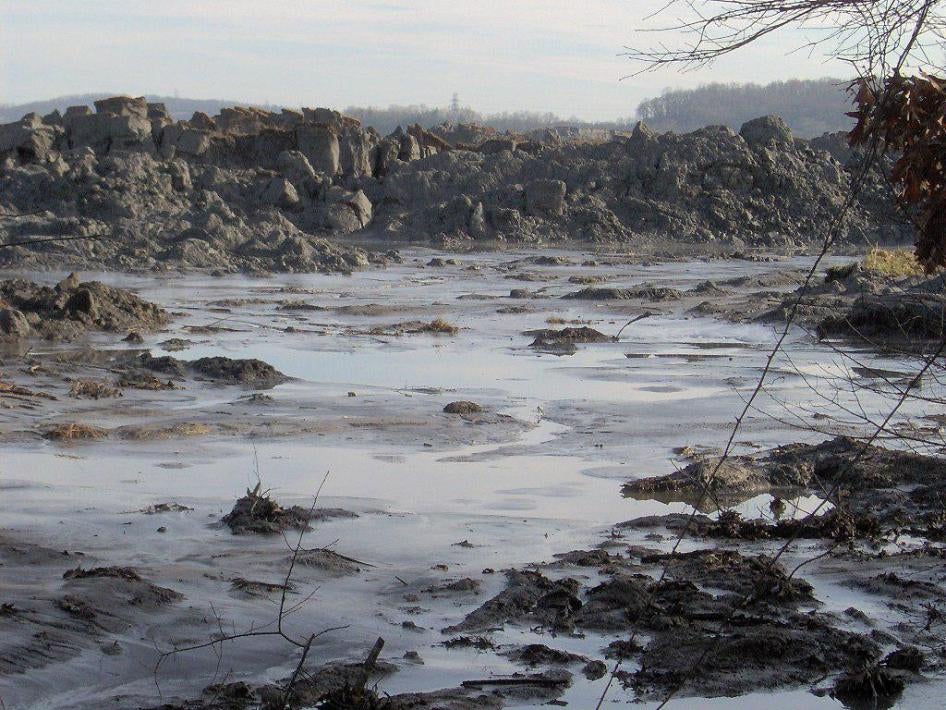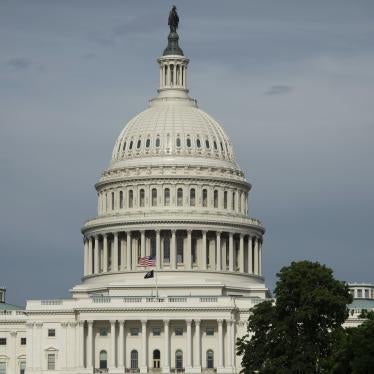Coal-fired power plants across the United States produce more than 100 million of tons of toxic ash every year. For decades, many states have allowed power companies to dump most of this ash into watery pits that are, on average, the size of nearly 40 football fields.
These pits, created with little or no regulatory oversight, pose a risk of a catastrophic spill flooding nearby communities with toxic sludge and widespread leaching of dangerous heavy metals into groundwater. Half of the U.S. population relies on groundwater for drinking, and private wells near power plants are especially vulnerable to contamination from coal ash.
Three days before Christmas in 2008, a dam broke on a coal ash pond in Kingston, Tennessee, spilling more than a billion gallons of black sludge into the Emory River. The spill, which took five years and cost more than $1 billion to clean up, was a dramatic reminder of the public health threat posed by the more than 1,000 coal-ash disposal sites that dot nearly every U.S state.
A subsequent EPA review found that the majority of coal-ash disposal sites are more than three decades old, which poses a problem for their structural integrity. Groundwater tests near ponds found high levels of such hazardous metals as arsenic, lead, mercury, and hexavalent chromium.
In 2015, under President Barack Obama, the EPA finalized new rules for coal ash after receiving 450,000 public comments and conducting eight public hearings. These set protections for people living near coal-fired power stations while allowing coal ash to be sold for reuse in concrete and other materials. And it imposed new monitoring requirements on power companies.
On March 1, power companies revealed for the first time the extent of coal-ash contamination of groundwater. That same day, the EPA, then under Pruitt, released its proposal to weaken the federal coal-ash rule by allowing state regulators to suspend groundwater monitoring and increase maximum permitted contaminant levels, among other measures.
On July 18, Wheeler finalized these rule changes, touting a $30 million annual savings in regulatory costs. For the multibillion-dollar power industry, these savings hardly seem like a plausible reason to eviscerate existing rules. Perhaps the greater motive is keeping the extent of pollution hidden from public view.
In the single public hearing the EPA held before finalizing this rule change, Lee McCarty, the mayor of a small town in Alabama that has a leaking coal-ash pond, exhorted the EPA not to weaken the rule. “My county voted 72 percent for the Republican administration,” he told the EPA representatives, “yet I have not had a single person” who supports this rule change. “If this is the best that the Environmental Protection Agency can do, I would say please, at least for transparency reasons, change your name to the UPA, the Utilities Protection Agency.”
In announcing the final rule, the EPA has promised even more changes to the coal-ash rule later this year. Members of Congress on both sides of the aisle should protect the health of the people they represent and insist that the EPA safeguard their constituents’ drinking water and ensure their right to information about possible contamination.









